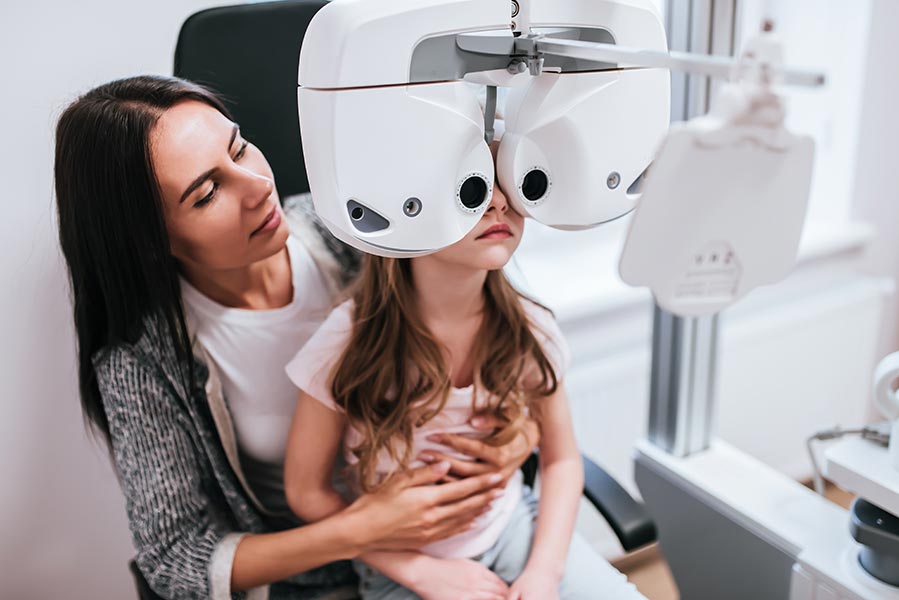With review and feedback from CEENTA pediatric ophthalmologist Hayley Klein, MD (Fort Mill)
Your child’s pediatrician noted that your child failed their vision screening during one of their routine checkups and has referred you to a pediatric ophthalmologist. While this is a very common referral, it can still be daunting to go through it for the first time. That’s why today’s blog is all about what your child’s eye exam will be like.
Checking vision
The first test will typically be a routine vision check. Children who can speak can play matching games with shapes and animals to see how well they can identify these objects. If your child is too young to speak, the doctor can use lights to see how well the baby follows a moving object and use other tools to see if one eye is preferred over another.
Stereo testing
If a child is old enough, their doctor will perform a “stereovision,” or depth-perception, test to see how well their eyes work together.
“Even before your child is old enough to speak or name their letters, there are very reliable ways we can check their vision”, CEENTA pediatric ophthalmologist Hayley Klein, MD, said.
A stereo test can give an enormous amount of information about how the brain uses the two eyes together at the same time. In this test, a child is given special glasses and asked to identify which objects in a special booklet appear near and far.
Are their eyes misaligned?
In the next test, your child’s ophthalmologist will check for strabismus, or misalignment of the eyes. Strabismus can cause vision loss, double vision, or decreased depth perception.
Dilating their eyes
Next, their eyes are dilated so their doctor can assess their glasses prescription and thoroughly examine the anatomy of the eye. Children require stronger eye drops than adults, which is why it’s important to see an ophthalmologist who is specially trained to treat children’s eyes.
“Even though eye drops can sometimes be scary for children – and adults! – they are incredibly important to make sure your physician is able to do a thorough and proper exam,” Dr. Klein said. “For children, it is nearly impossible to give an accurate glasses prescription without the eye drops.”
Getting them the right glasses
Even for kids who can’t speak yet, your doctor is able to measure a glasses prescription. Your child’s doctor will measure the shape of your child’s eye using a technique called a retinoscopy, which measures the shape of their eye. This helps the doctor measure for glasses specific to the shape of your child’s eye.
“This is one more reason it is important to see a doctor who is specialty trained in Pediatric Ophthalmology,” Dr. Klein said.
Anatomy check
Finally, the doctor will check the anatomy of their eye from front to back to make sure there are no other issues that could cause concern.
Bring your child to CEENTA
If your child needs additional vision exams, bring them to CEENTA. Our pediatric eye doctors will give them the best care to ensure they see as clearly as possible as early as possible.
This blog is for informational purposes only. For specific medical questions, please consult your doctor. New patients can make appointments online with Dr. Klein or any of our eye doctors in North and South Carolina. Current patients can also make appointments through myCEENTAchart with physicians they have already seen.
Charlotte Eye Ear Nose & Throat Associates





